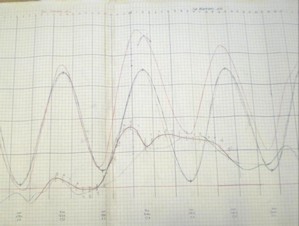Today I attended a seminar given by Dr Anna Carlsson-Hyslop from Lancaster University. The seminar was based on research she carried out for a PhD at Manchester University on the history of Science, specifically “Storm surge science at the Liverpool Tidal Institute 1919 – 1959: funding and practice” (abstract).

Graph showing storm surge of the 1953 Flood
The talk was particularly interesting as it discussed the development of sea level science in Liverpool from a social historian’s perspective. In particular, it placed emphasis on the drivers for change in scientific studies, e.g. changes in funding, changes in policy and political motivations.
The presentation also concentrated on the directors of the Tidal Institute and, alongside looking at their contribution to the scientific field, also examined their characters and the change in way they self-identified over time from mathematicians to oceanographers.
What I wanted to know was: what motivated somebody to want to study the history of the Tidal Institute? Perhaps this could help us identify potential new users of our data. Dr Carlsson-Hyslop said she had been interested in the study of extreme weather events, which led her to study the flooding of central London in 1928, and from there on to the study of the history of the Tidal Institute.
The talk combined parliamentary papers, newspaper extracts and materials from the archive in the World Museum, Liverpool It would be nice to think that perhaps someone could use our digitised data in a similar project in the future.











